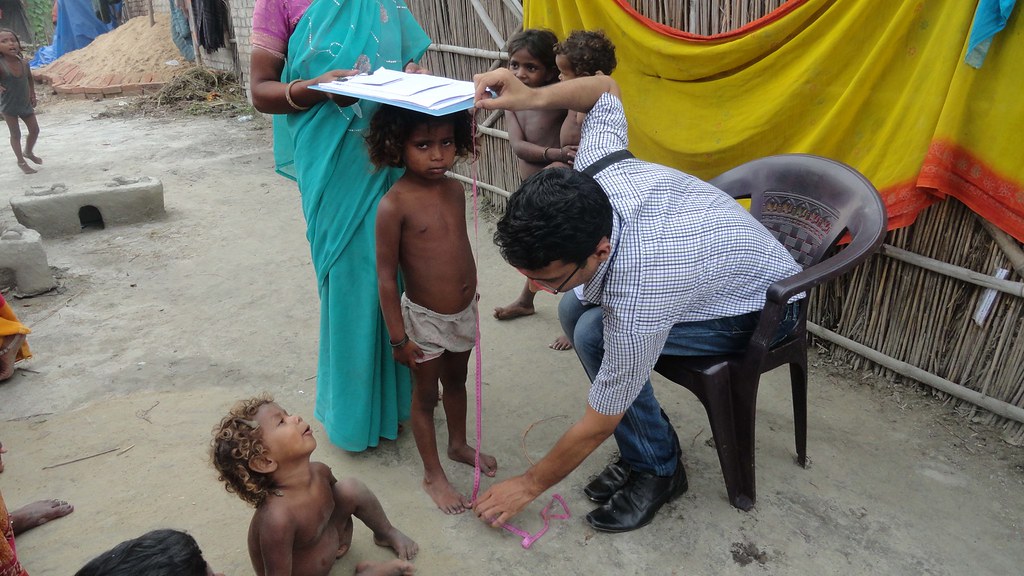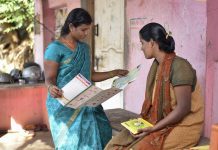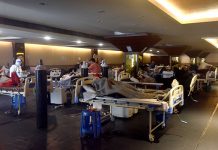In recent years a large number of public health personnel ranging from senior scientists to grassroot workers have been drawing attention to the dangers of mortgaging public health responsibilities to those guided by the motives of maximizing private profits. One area of particular concern in this context has been that of vaccines. While the great role of vaccines in promoting public health by providing protection from disease is very widely acknowledged, time and again attention has been drawn to the perils associated with the increasing concentration of vaccines production in the hands of a few multinational companies and their collaborators, some of them even dressed up as philanthropists.
Recent research in India has thrown up the highly disturbing fact that as a result of the arbitrary misuse of technology by these powerful sections, as many as 491000 children in India were afflicted by non-polio acute flaccid paralysis ( NPAFP) over a 17 year period 2000-2017, a tragedy that was almost entirely avoidable if the required care was taken to ensure the safest use of available technologies. While these children lived in various states of India, perhaps the highest number of afflictions were in Uttar Pradesh and Bihar. NPAFP is described in a research paper as “clinically indistinguishable from polio paralysis but twice as deadly.” Several of these children who suffered from this affliction later died.
An additional reason for telling the story of this tragedy now is that some of the leading agents involved in this fiasco are very active today also in the race for COVID-19 vaccine.
The tragic story starts in the late eighties when the world was preparing to embark on a campaign against poliomyelitis (polio) disease. At that time there were 350,000 cases in around 125 countries, affecting children under 5 years of age. 1 in 200 infections led to irreversible paralysis. Among those who suffered paralysis, 5 to 10 per cent died.
It was decided that instead of the more expensive and safer vaccine used in rich countries, oral vaccine will be used in this campaign which was mainly in developing countries like India. However there was a curious, suspicious start as the existing capacity to produce oral vaccine within India was sabotaged. Now India became entirely dependent on imports. Soon it was seen that there was a pressure to concentrate the country’s scarce health resources on just one program of oral polio vaccine and what is more the rounds of giving oral dose were increased like never before so that some experts feared that vaccine much in excess of safe limits was being given to children. On the one hand a safer alternative had been rejected on the plea that oral vaccine was cheaper but now we were being asked to administer such high doses that even safety limits were being crossed while the expenses were increasing. We were being asked to pay more for harming our children! It was around the same time it was seen that the number of cases of NPAFP started increasing much beyond the expected norm.
The situation worsened with the introduction around 2005 of a high-potency monovalent vaccine that contained five times the number of type 1 viruses compared to those contained in the previously used vaccine. With this new introduction the number of cases of NPAFP started increasing even more rapidly. The extra cases were sometimes five to six times of the expected number. In a single year the number of extra cases could go up to 40000 or even 50000.
It was by counting the number of such cases that the children afflicted by NPAFP ( extra cases above expected norm) has been estimated at 491000 over the period 2000-17 in India alone.
Meanwhile similar disturbing reports were coming in from other countries as well.
A question is—if the number of NPAFP cases is 491000 in India alone, what is the total number of afflictions in all the countries where similar methods were used.
While there are several reports and research papers on this , the most comprehensive and discussed paper was published in the reputed International Journal of Environment Research and Public Health on 15 August, 2018. This paper is titled Co-relation between Non-Polio Acute Flaccid Paralysis Rates with Pulse Polio Frequency in India. This paper has been written by Rachana Dhiman, Sandeep C. Prakash, V. Sreenivas and Jacob Puliyal. The last mentioned author in particular has made an outstanding contribution to unearthing this evidence. The estimate of 491000 extra afflictions is taken from this paper which has presented a table on afflictions for each of the 17 years. There was first a big increase in extra NPAFP cases and later, when pulse polio was greatly reduced or stopped, a decrease in extra NPAFP cases. This paer concludes, “ Our findings suggest that increase in NPAFP ( and a later decrease in such cases) was indeed an adverse effect of the pulse polio immunization programme.”
Other researchers who have contributed much to the understanding of this tragedy include S. Sathyamala whose analysis for Uttar Pradesh data revealed that mortality rate for patients with NPAFP was twice the mortality rate for wild polio.
A study of M.A.Gupta and J.A Mathew ( with Puliyel) revealed that in 2005 when one-fifth of the cases wee followed up at 60 days in Uttar Pradesh, 8.5 per cent of them had died and 35 per cent were found to have been left with residual paralysis. Yet another study by N.Vashisht and P.Sreenivasan 9 (with Puliyel) revealed that NPAFP rate increased sharply when more than six rounds of pulse polio were used in a year. They mentioned the likely possibility that repeated doses of the live vaccine virus delivered to the instentine may colonize the gut of the child and alter the viral microbiome of the instentine, and this can result in strain shifts of enteropathogens. It is possible, they said, that the new neurotropic enteroviruses colonizing the gut may induce paralysis.
Bharat Dogra is a freelance journalist who has been involved with several social movements and initiatives. His recent book on survival issues and people’s response titled Planet in Peril has been published by Vitasta, Delhi.














